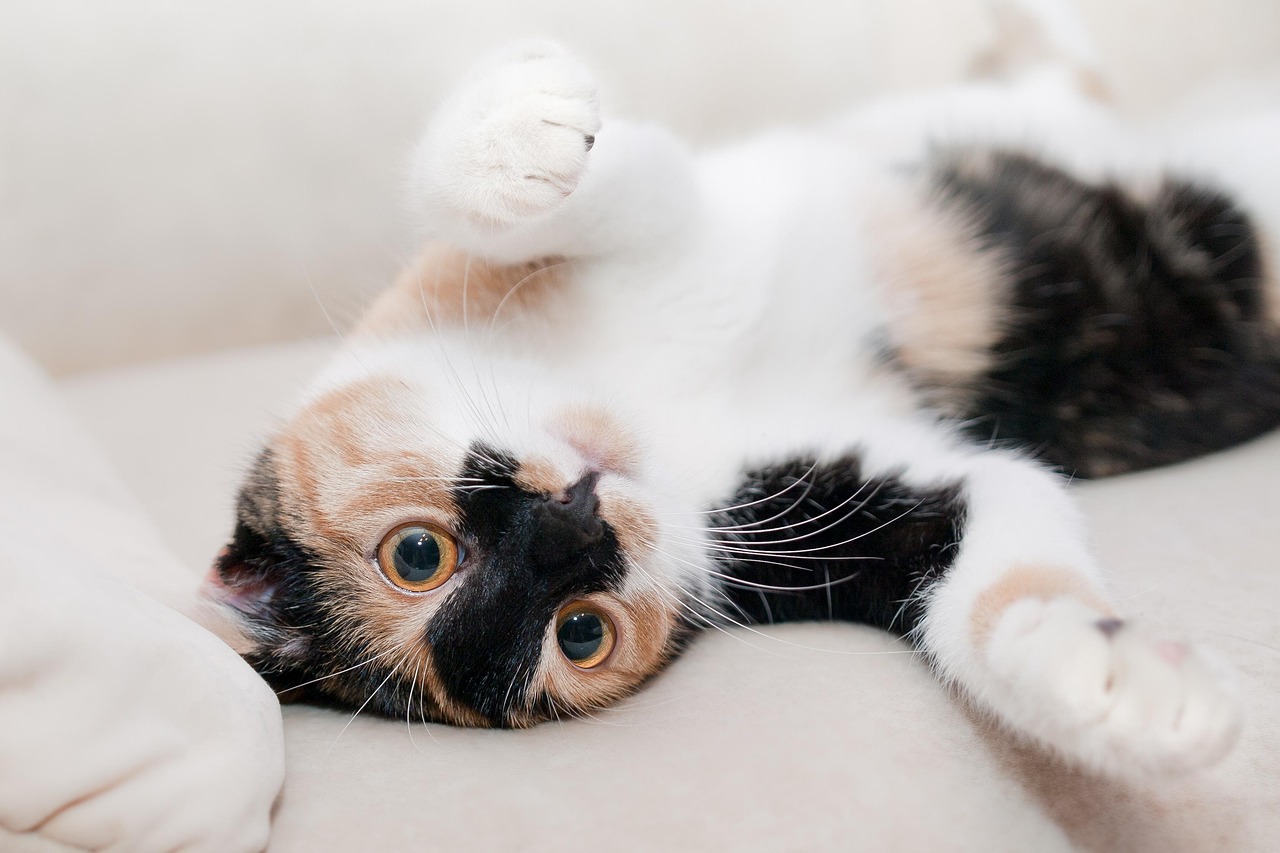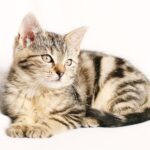Cats are known for their independence, but beneath their tough exterior lies a soft spot for affection. They show love and loyalty to their owners in unique ways, such as kneading with their paws or purring contentedly. Being cryptic creatures, they communicate in ways that their human companions often misinterpret. This article probes the language of cats, assisting you with deciphering their vocalizations, non-verbal communication, mood, and emotions, By tuning in to your cat’s emotional state, you can provide comfort and reassurance when they need it most, cultivating a lifelong connection.
Felines talk by utilizing complex mixes of non-verbal communication and vocalization. Figure out how to perceive feline language essentials, and sort out the most well-known mixes, to comprehend what your feline is expressing to you and different pets in your loved ones. With the reading language of cats, you will soon be a specialist in the language of cats.
-
Vocalizations Purrs, Meows, etc.
Felines use vocalizations to communicate emotions. Meowing, purring, murmurs, snarls, and more are included in the feline repertoire, each with exceptional implications depending upon their unique situation. While grown-up felines regularly don’t whimper at one another, trained felines have figured out how to meow at people. A few researchers think this is a manipulative conduct felines embrace to get what they need from their owners.
-
EYE EXPRESSION
Felines communicate with their eyelids — how open or shut they are — and wise with understudy enlargement (a dark eyepiece). An unexpected widening (growing) of the pupil results from sudden dilation, it may be due to dread, interest, or some other strong emotion. Completely open eyes show trust while restricting the eyes to a cut can flag dread or hostility. Assuming your feline shows saggy, tired-looking eyelids, this is a sign that your feline is loose and trusting. Attempt a sluggish flicker and check whether your feline squints back, showing a “kitty kiss” of friendship. However, on the off chance that your feline is gazing at one more feline without flickering, that is an indication of predominance or hostility.
-
EAR EXPRESSION
Felines express inclination and emotion with their ears. Front-oriented ears express interest. When a cat’s ears start turning sideways or backward, it typically means the feline is more anxious or upset. In reverse ears, a murmur or swipe is a certain sign your feline feels undermined or could do without what you’re doing.
-
FUR EXPRESSION
A sound, quiet feline’s fur leans flawlessly against the body. Cats are self-preparing animals, so the state of their fur can edify you with an extraordinary arrangement concerning the well-being of the felines. Unsettled fur can indicate that a feline is wiped out, and it’s significant not to disregard it, particularly assuming that the cat is likewise retching or tired. Be that as it may, an all of a sudden eased-up coat, including a “bottle brush” tail, suggests fear or aggression. It’s ideal to give space to a feline seeing this response.
-
TAIL EXPRESSION
A feline’s tail signals interest, warmth, and excitement. The level of the tail, as well as the movement, has meaning. A tail held high in a cat is a clear sign they want to be near you and are open to engagement. A whipping or beating tail is an indication to remain away. At the point when a feline’s tail swings from one side to another, it could show they’re either having some good times or feeling upset. Assuming the fur on the tail bristles, it shows protectiveness. A cat will raise and shake its tail when it’s ready to fight, but if the tail is tucked, the feline feels very fearful.
-
BODY EXPRESSION
The feline’s all-out body pose shows everything from certainty to dread or accommodation. To comprehend the full message, the body expression should be perused related to what the eyes, ears, tail, fur, and vocalizations express.
A loose and blissful feline would have ears pointed somewhat forward, eyes loose, and stubbles likewise pointed forward. The more you focus on your feline, the simpler it will be to peruse its non-verbal communication and realize everything they’re attempting to say to you.
-
SMELL AND SCENT
People can’t necessarily in every case recognize or decipher the aroma signals felines use for correspondence. Nonetheless, among aroma instruments, felines utilize solid pee and excrement checking, hitting (body scouring) conduct, and tearing to leave scented messages that different felines read.3 Felines are regional, and the fragrances they leave behind are intended to send the message that “this domain is mine” to would-be intruders. Their feeling of scent is strong to the point that even extremely youthful little cats use aroma before they can see plainly.
Felines can likewise turn out to be progressively vocal as they age. Two potential explanations behind this are age-related dementia and falling apart visual perception. A cat who feels restless or confounded may howl to look for consolation. Hearing misfortune can likewise make a kitty express stronger than expected because they can’t decide their volume. (Any articulated conduct change ought to set off an outing to the vet to ensure your feline isn’t sick or in torment.)
- Meowing is generally useful; your feline might utilize “meow” as a hello, an order, a protest, or a declaration. Certain individuals have noticed their felines strolling around the house whimpering to themselves.
- Chirps and trills are the expressions a mother feline advises their cats to follow them. Focused on you, means your feline maintains that you should follow them, normally to their food bowl. Assuming that you have more than one feline, you’ll frequently hear them banter with one another along these lines.
- Purring is generally an indication of satisfaction. Cats murmur at whatever point they’re cheerful, even while they are eating. A portion of the time, regardless, a cat could murmur when they’re fretful or cleared out, using their murmur to comfort themselves, like a youth sucking their thumb.
- Growling, hissing, or spitting indicates a cat is irritated, terrified, angry, or forceful. Don’t bother this feline.
- A yowl or howl (they sound like clearly, really long whimpers) lets you know your feline is in trouble of some sort — trapped in a wardrobe, searching for you, or in torment. Track down your feline on the off chance that they’re making this commotion. Notwithstanding, in unaltered felines, these sounds are essential for mating conduct. If your cat is old, they could cry since they’re confounded, especially if encountering a psychological issue, similar to dementia.
- Chattering, chittering, or twittering Sounds when your cat watches birds or squirrels in the window. It generally means fervor, or they might be considering nibble time.
-
A Key To Understand your Cat’s Mood
Trying to figure out if your cat is content, relaxed, or feeling off ? Check out these tips
- Content Sitting or resting, eyes half shut, pupils narrowed, tail for the most part still, ears forward and purring — a truly blissful feline will frequently work on a delicate surface.
- Playful Ears forward, tail up, stubbles forward, and understudies fairly enlarged — playing is hunting conduct; your feline might follow their prey (a toy, a housemate, or you), then, at that point, hunch down with their backside somewhat raised. A little squirm of the butt, then, at that point, … jump! Your feline will snatch their prey, chomp it, wrestle it to the floor, and kick it with their rear feet.
- Irritated or overwhelmed Pupils dilated, ears turned around, and tail jerking or waving — your feline might snarl or put their teeth on you as an advance notice to stop. Intense play can rapidly transform into overstimulation in certain felines, bringing about gnawing and scratching.
- Nervous or anxious Ears sideways or back, pupils expanded, and tail low or tucked between legs — your feline might sneak through the house near the floor, searching for someplace to stow away. They might turn their face to the wall to close the world out.
- Frightened or startled Think Halloween feline — ears back and level against their head, stubbles back, back angled, fur remaining on end, and tail erect or low. They might yowl, snarl, murmur, and spit.
- Defensive Squatted, ears smoothed, bristles back, folded over their body and pupils widened — they may meow loudly, snarl, murmur, and spit.
- Angry, aggressive Ears back, pupils very constricted, and their tail might be up or down with the fur remaining on end — a forceful feline will gaze intently at one more feline and growl or yowl until the other feline gives way. Felines don’t want to fight; they prefer standoffs, But this could escalate into a fight if one of the cats doesn’t back down.
The rich and complex language of felines is hard to comprehend without steadiness and insight. You can foster a cozy relationship with your catlike buddy by noticing their non-verbal communication, vocalizations, and ways of behaving. The comprehension of cat language is continuous and is brimming with adoration, trust, and common getting it.








